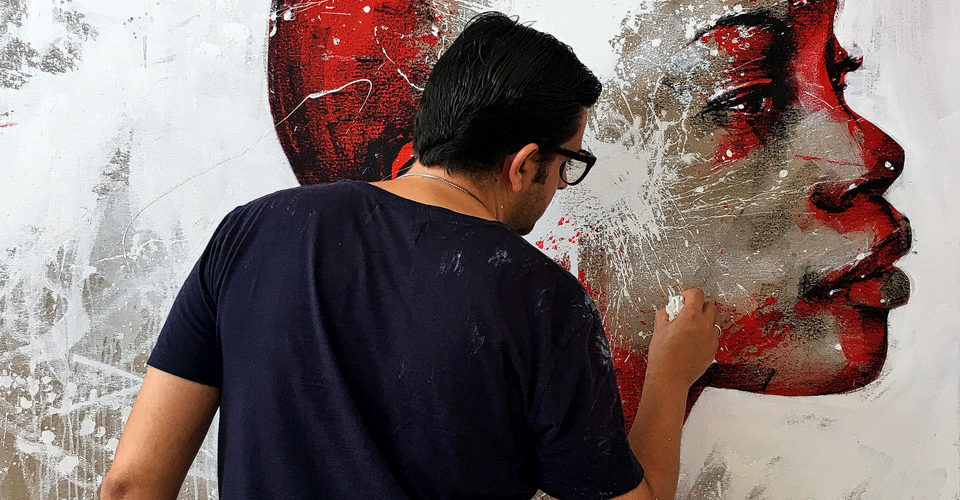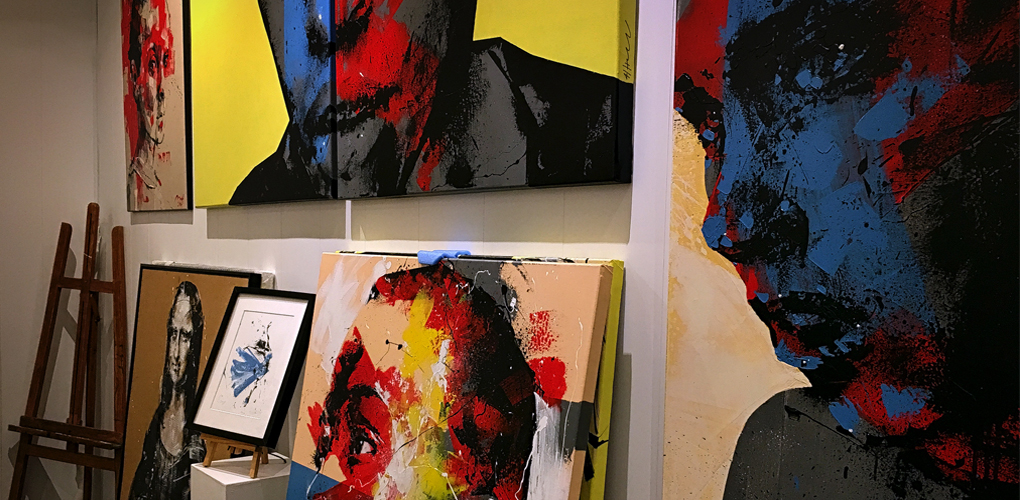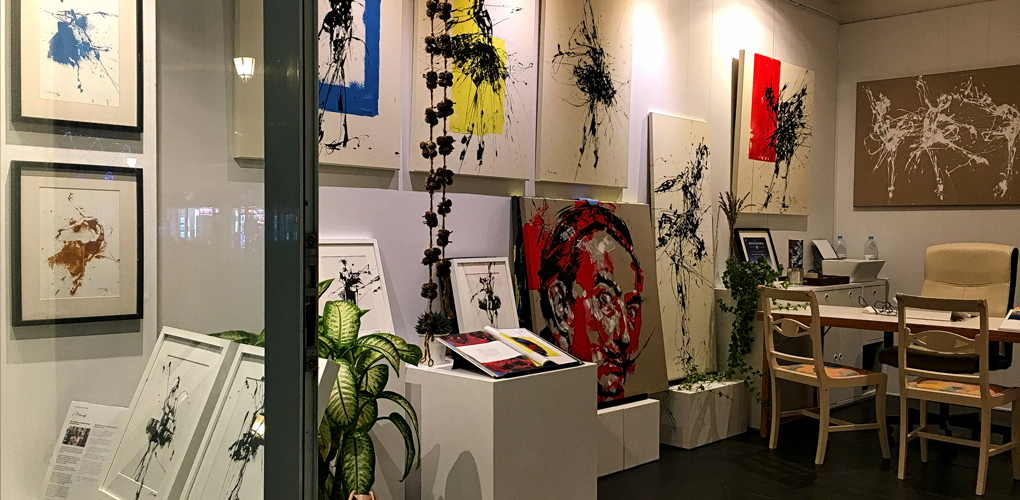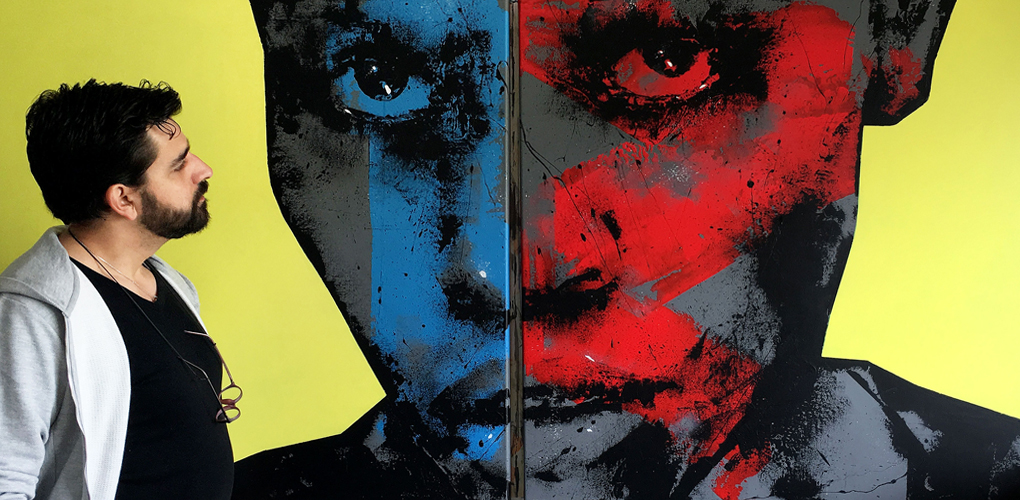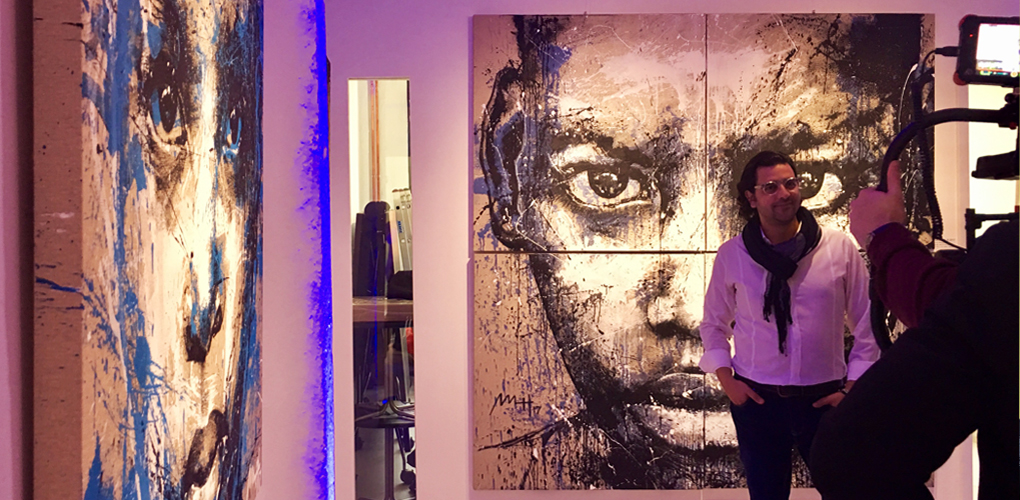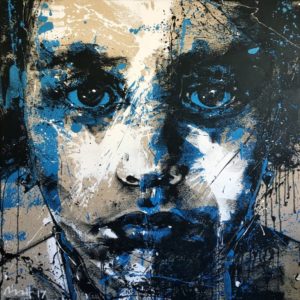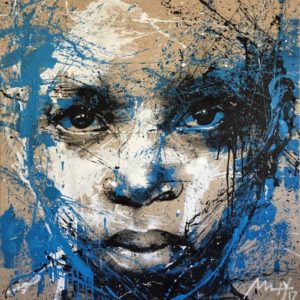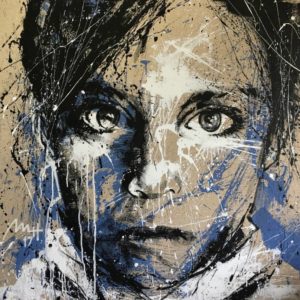Inside the Studio
 Mario Henrique captures the unpredictability of human behavior
Mario Henrique captures the unpredictability of human behavior
What are the major themes you pursue in your work?
I paint people. I find it to be the most interesting subject. I’m always intrigued by the subtleties and the double meanings of people’s body language, expressions, and looks… Whether I’m painting something more realistic, like the portrait collections, or something that leans more toward the abstract, like my “Ballerina Series,” I’m always fascinated by the unpredictability of the human behavior, the sudden movements, the brief glances, the impermanence of facial expressions.
How did you first get interested in your medium, and what draws you to it specifically?
Aside from being a painter, I’m also a designer. I’ve worked as a creative director for over a decade. So my approach to painting is greatly influenced by my visual perception as a designer: the composition, the geometry, the special arrangement of the elements, the use of color… Aside from this, I use tools that allow me to work fast – I buy spatulas and brushes from hardware stores, I use cardboard sheets and reversed canvases to get a more genuine and rough finish to my works…
How has your style and practice changed over the years?
I actually feel that my style and technique changes every time I start a new painting. I try to be very spontaneous when I’m working – that process should be reflected in the painting. You should be able to look at the final piece and feel the physicality of the painting process involved in its making. Over the years I’ve worked towards making this “cause and effect” more and more obvious.
Can you walk us through your process? Do you begin with a sketch, or do you just jump in? How long do you spend on one work? How do you know when it is finished?
I don’t sketch. I plan, but I do it in my head. In most of my paintings, I start by throwing paint, trying not to overthink or anticipate anything. So my initial approach is – in part – based on chance, on small random accidents – it doesn’t rely exclusively on my persistence or technique. From then on, I keep adding layers of paint until I feel there’s nothing more I can do to make the piece consistent and somewhat complete. I can finish a painting in a few minutes or I can have it in my studio for weeks until I feel the piece has its own value and presence and there’s nothing more I can add to it.
Prefer to work with music or in silence?
Everything’s better with music. It’s just a matter of finding the right soundtrack. From classic rock, to jazz, blues, folk and sometimes just abstract noises and experimental sounds. In my studio there’s always music playing, different genres for different moods and different paintings.
What was the best advice given to you as an artist?
As a painter, the best advice I’ve been given was: “if you want to paint, don’t. Do something else instead”. That made me think whether I really wanted to – or actually should – be a painter. It made me seriously consider if I had something original to say, something to communicate through painting. It makes no sense to fill the world with more stuff and waste people’s time with things over which you have nothing to say in the first place. So this simple phrase made me think things through. And years later, here I am.
